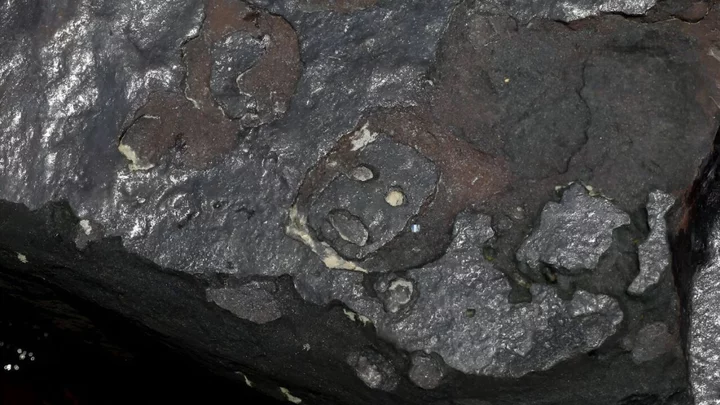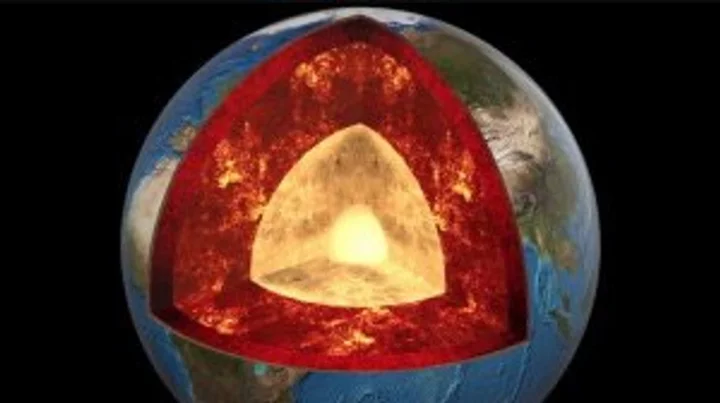
Bitcoin rises 3.95% to $31,187
Bitcoin rose 3.95% to $31,187 at 17:05 GMT on Monday, adding $1,185 to its previous close. Bitcoin, the
2023-10-24 01:19

5 bold predictions for the 2023-24 ACC Men’s Basketball season
The ACC Men’s Basketball season is set to be bold and exciting in 2023-24. Get ready for predictions, player performances, and potential upsets for Duke, UNC, Miami, Louisville and more.
2023-10-24 00:49

Mysterious ancient engravings uncovered by drought in the Amazon
The discovery of beautiful, ancient rock engravings has been a bitter-sweet experience for experts in Brazil’s Amazon. On the one hand, the carvings offer an exciting insight into the first people who inhabited the region. On the other, it is a worrying signal that the Negro River, which runs through the region, may soon cease to exist. An extreme drought in parts of the rainforest has led to a dramatic drop in river water levels – with the Negro’s flow reaching its lowest level for 121 years last week. The drop exposed dozens of normally submerged rock formations featuring carvings of human forms that may date back some 2,000 years. Livia Ribeiro, a longtime resident of the Amazon's largest city, Manaus, said she heard about the rock engravings from friends and wanted to check them out. "I thought it was a lie,” she told the AFP news agency. “I had never seen this and I've lived in Manaus for 27 years.” She admitted that whilst scientists and members of the public were delighted at the discovery, they acknowledged that it also raised unsettling questions. "We come, we look at (the engravings) and we think they are beautiful. But at the same time, it is worrying,” she said. “I also think about whether this river will exist in 50 or 100 years.” Drought in Brazil's Amazon has drastically reduced river levels in recent weeks, affecting a region that depends on a labrynth of waterways for transportation and supplies. The Brazilian government has sent emergency aid to the area, where normally bustling riverbanks are dry and littered with stranded boats. According to experts, the dry season has worsened this year due to El Niño, an irregular climate pattern over the Pacific Ocean that disrupts normal weather, adding to the effect of climate change. Jaime Oliveira, of the Brazilian Institute of Historical Heritage (Iphan), said the engravings comprise an archaeological site of "great relevance”. They are located at a site known as Praia das Lajes and were first seen in 2010, during another period of drought (which was not as severe as the current one). Most of the engravings are of human faces, some of them rectangular and others oval, with smiles or grim expressions. "The site expresses emotions, feelings, it is an engraved rock record, but it has something in common with current works of art," Oliveira said. For Beatriz Carneiro, historian and member of Iphan, Praia das Lajes has an "inestimable" value in understanding the first people who inhabited the region, a field still little explored. "Unhappily it is now reappearing with the worsening of the drought," she said. "Having our rivers back (flooded) and keeping the engravings submerged will help preserve them, even more than our work." Sign up for our free Indy100 weekly newsletter Have your say in our news democracy. Click the upvote icon at the top of the page to help raise this article through the indy100 rankings
2023-10-23 22:23

This 'Smart' Bed Accessory Will Rock You to Sleep
The Adiva One is a bed accessory that operates on the premise that adults enjoy being rocked to sleep as much as babies do.
2023-10-23 20:55

What Are Those Red and Green Lights on Curling Stones?
Olympic curling stones are pretty self-policing—here's what those green and red lights can tell you.
2023-10-23 20:48

This Updated Pegboard Game Helps Stroke Victims Relearn Motor Skills
One startup is using games to make physical therapy more engaging.
2023-10-23 20:23

Tesla to top $9 billion spending target this year as it rolls out new models
(Reuters) -Tesla said on Monday its capital expenditure for 2023 would exceed the $7 billion to $9 billion target it
2023-10-23 20:18

France not considering nationalising Atos -ministry source
PARIS France's government is not considering nationalising IT consulting group Atos, a finance ministry source said on Monday
2023-10-23 18:52

EV brand Beyonca signs MOU over investment with Saudi Arabian group
BEIJING Electric vehicle brand Beyonca, backed by Renault and Dongfeng Motor, said on Monday it signed a memorandum
2023-10-23 18:16

Scientists baffled after discovering that the Earth's core is 'leaking'
The name “core” suggests something hard and fixed but, it turns out, the Earth’s core is leaking. That is, at least, according to a team of top scientists, who drew the conclusion after analysing 62-million-old Arctic rocks. Geochemists from the California Institute of Technology and Woods Hole Oceanographic Institution detected record concentrations of helium 3 (3He) and helium 4 (4He) isotopes in the rocks, which suggest a slow trickle up from the very heart of our planet. They believe there could be reserves of the elusive gas buried some 2,900km underground. Helium is a surprisingly rare element on the Earth’s surface and experts have yet to establish just how much of it remains trapped deep beneath our feet. However, the new discovery has provided them with a fresh insight into the most mysterious region of our world. Understanding the presence of these helium isotopes could illuminate key processes in the core, such as how the Earth generated its life-protecting magnetic field. Most helium in the universe dates back to the Big Bang which occurred 13.8 billion years ago. The Earth swallowed up some of this as an infant planet, but mostly burped it all away during its 4.6 billion-year-long formation, as Science Alert reports. This means that any traces of helium found in volcanic rock – such as the samples unearthed in the Arctic – are believed to come either from pockets of mantle that are yet to release their helium, or from a vast, slow-leaking reserve. Basaltic lavas on Canada's Baffin Island contain some of the world's highest ratios of 3He to 4He, which geologists believe indicates that the gas's presence is not to do with the atmosphere, but rather the sign of deeper terrestrial origins. Several years ago, geochemist Forrest Horton uncovered helium isotope ratios of up to 50 times that of atmospheric levels in samples collected from Baffin's lava fields. This unusual concentration was also detected in lavas collected from Iceland. Horton and his team wondered if the helium in both samples may have derived from an ancient reservoir deep within the crust. And, it seems, their hunch may have been right. Their latest analysis – including specimens of the mineral olivine taken from dozens of sites across Baffin and surrounding islands – has delivered the highest ratio of 3He to 4He ever recorded in volcanic rock – measuring nearly 70 times anything previously detected in the atmosphere, as Science Alert notes. The team also considered ratios of other isotopes in order to rule out factors that may have altered the helium’s composition post-volcanic eruption, and found that the ratio of isotopes in the gas neon also matched the conditions present during the Earth’s formation. Despite advances in geology, the Earth’s core remains a great mystery, given that we have no way of directly exploring its core. The deepest hole humans have ever dug – branded the "entrance to hell" – extended an impressive 12,263m (40,230ft) down, but even that doesn’t come close to breaking through the crust to the layers beneath. Still, thanks to techniques like seismic tomography – which analyses how waves of energy travel through different materials during earthquakes – we’ve been able to map out the world’s interior. And carefully crafted simulations, based on the thermodynamics and pressures of our planet’s innards, suggest reserves of noble gases (like helium and neon) trapped in the core could have been protected as the Earth grew before seeping into the surrounding mantle over time. If the core is leaking, this could teach us a thing or two about how planets like ours form and how life, eventually, emerges. Sign up for our free Indy100 weekly newsletter Have your say in our news democracy. Click the upvote icon at the top of the page to help raise this article through the indy100 rankings
2023-10-23 17:29

Biden administration picks 31 regional tech hubs to spur US innovation
By David Shepardson WASHINGTON The U.S. Commerce Department said on Monday it was naming 31 regional tech hubs
2023-10-23 17:26

SpaceX signs deal to launch key European satellites - WSJ
SpaceX has signed a deal to launch up to four of Europe's flagship navigation and secure communications satellites
2023-10-23 16:58
